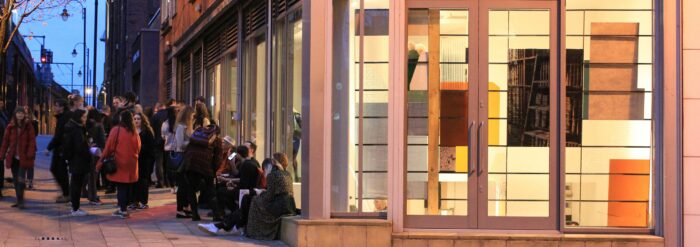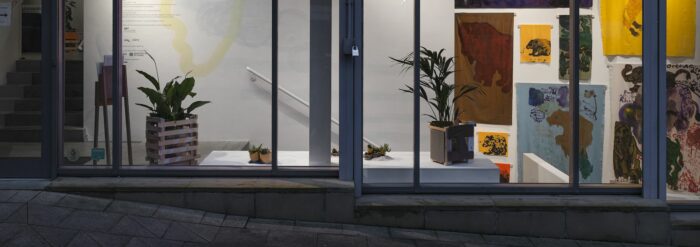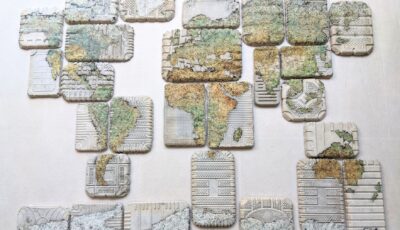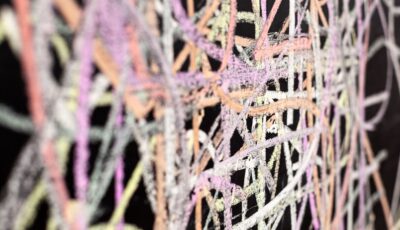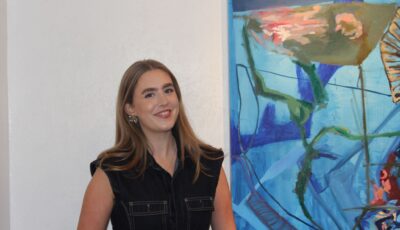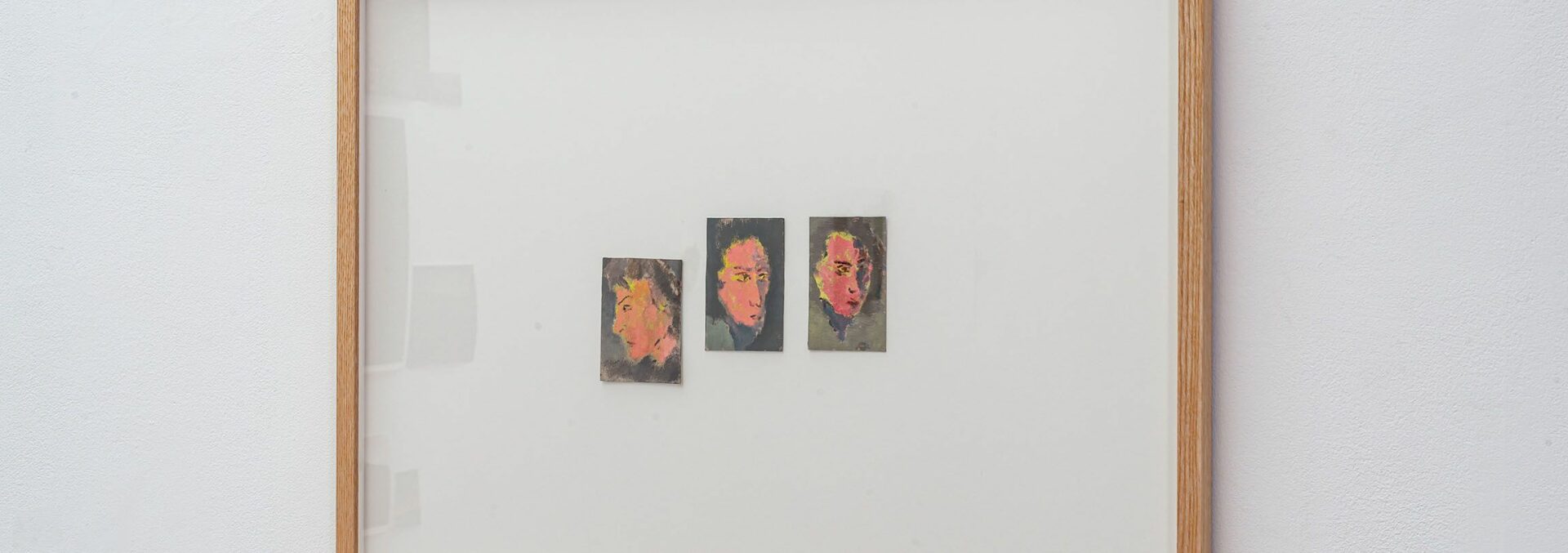
Artists and Sustainability Spotlight: Isaac Jordan
Posted on 20 August 2024
This month we’ve invited Isaac Jordan to contribute to our ongoing series Artists and Sustainability Spotlight, where we ask artists to share short responses about their work and how it might relate to climate change.
Isaac Jordan, a Manchester-based artist, holds a BA in Fine Art from the University of the West of England, Bristol. His creative process involves the development of focused series, with each piece being born during a single sitting. Drawing inspiration from a diverse range of sources, including YouTube videos and stills from 1970s science-fiction films, Jordan’s work centres on the depiction of still images.
His paintings are then arranged in minimal installations, resulting in a cinematic experience in which the finalised work exists animated in the viewer’s imagination. Notable accolades include the Spike Island Graduate Fellowship (2020/21) and the Haworth Trust New Graduate Award at Paradise Works (2022). Additionally, Jordan’s work has been shortlisted for the BEEP Painting Prize in 2020, where his work was exhibited in Swansea.
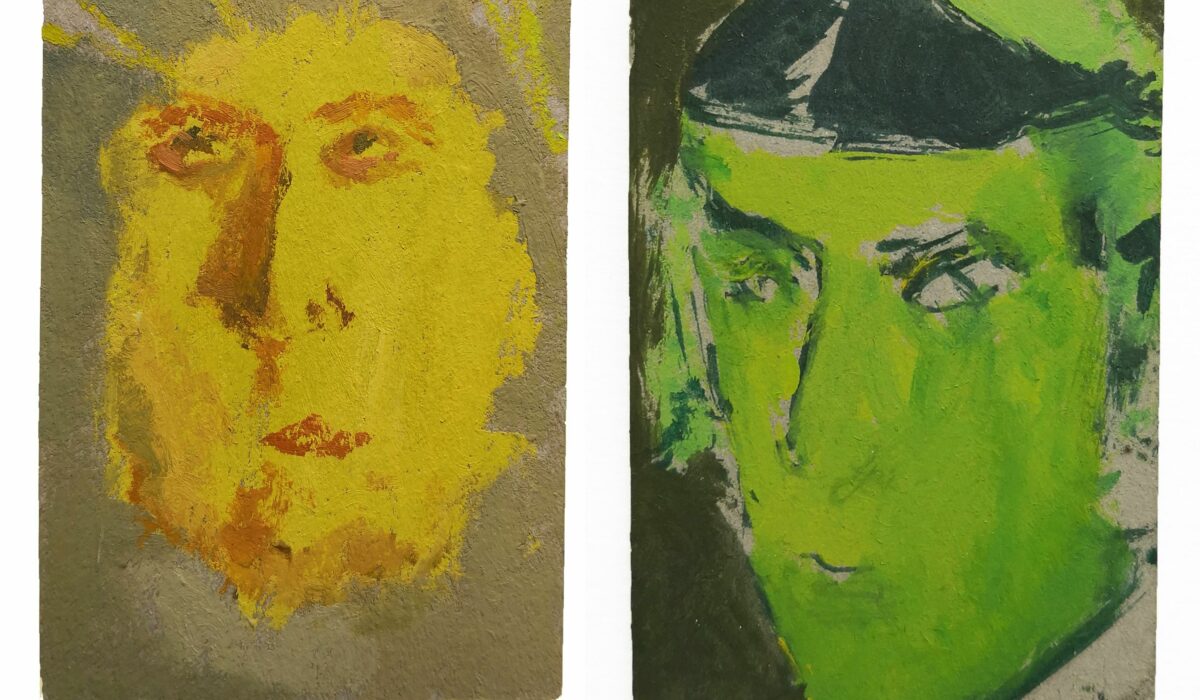
In what ways do you feel your work might relate to issues of climate change and sustainability, in the content of the work, its narrative, conceptually or theoretically? How might it speak to or challenge public discourse?
Although my work might not at first directly reference the climate crisis in its content, I can see ways in which my thinking around these issues has fed into the kind of work I want to make. I see my work as a way of collecting and arranging different elements, both in a painting and then in the grouping of multiple works together. I make work in ongoing series, repeating images and reusing materials. There’s often another painting on the back. This way of working is minimal in the amount of waste created as I source very little new material.
With regards to the materials, processes and techniques you use to produce your work, are there any practical decisions you make with regard to climate change and sustainability?
I definitely make practical decisions in the studio with regard to sustainability. The majority of my time is spent making really small scale paintings, often just a few centimetres in size. For these, I use grey card or scrap plywood from a set building company which would otherwise be burnt. This reduces the need to source new materials. I like this way of working for lots of different reasons. It’s quick to start a painting as I leave out any surface preparation, I can just turn the painting over and start again if I don’t like what I’m doing. It also allows me to make lots in series and shuffle through them afterwards to find the best ones. Using scrap wood is exciting for me because I’m not completely in control. I respond and adapt to whatever type of wood I get given, changing the type of images I end up making. This idea of reusing, arranging and collecting are important aspects of my practice.
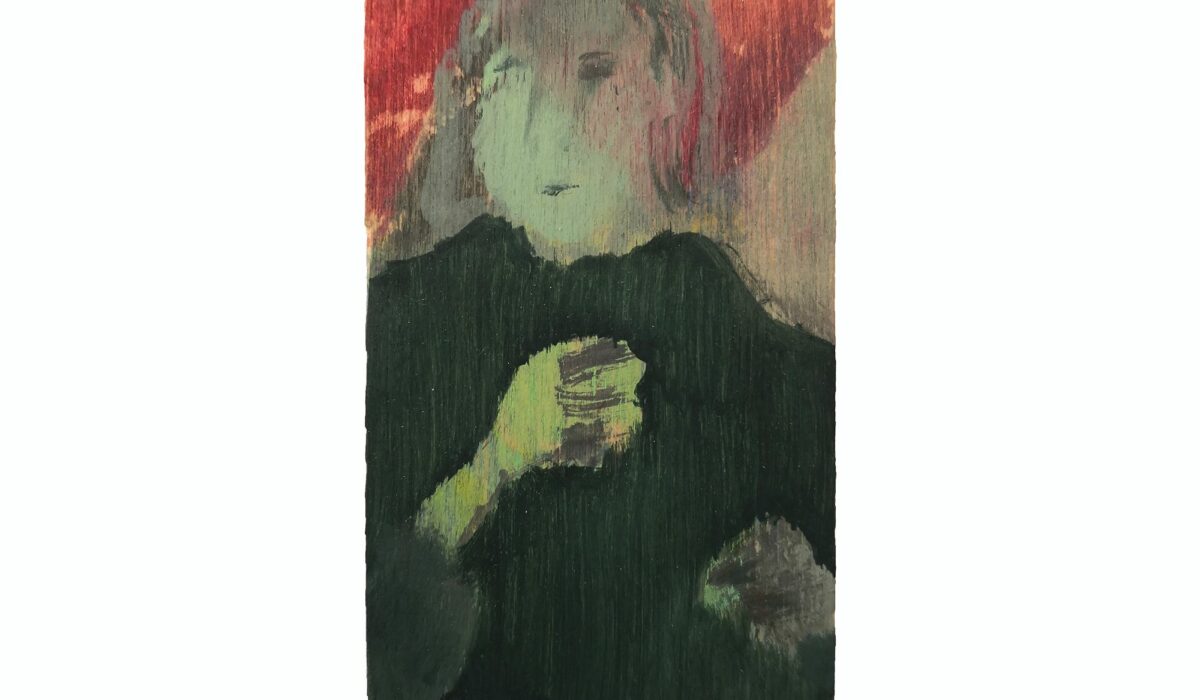
In general, how do you feel galleries, art spaces, artworks and artists, might be able to contribute, what if any role do you feel they can play in a progressive conversation?
As well as programming vital exhibitions that engage visitors in progressive conversations, I think there’s lots of practical and simple things galleries can do to contribute. I’ve been inspired to see many galleries and artists reusing materials in their exhibitions. Refactoring in partitioned walls from previous shows into new iterations or simply building spaces to the dimensions of MDF boards to avoid offcuts are really simple and effective ways a gallery might reduce waste. I think there probably needs to be more long term planning for this, particularly in larger institutions where specific storage units could be developed to facilitate this on a bigger scale. Art spaces can also allow artists to access this scrap material for the fabrication of new works and lend structures/equipment out for events. I think this all feeds into a more healthy, collaborative relationship between arts spaces, materials and the community.
Are there any tips or advice, anything you have learnt you might want to share with other artists or our audiences?
For me, working collaboratively and being part of a community of artists is really important in sharing ideas and developing my own thinking. Through a community of artists, I’ve been able to share resources and have been made aware of painting materials like Sansodor, a Turpentine alternative that is kinder to the environment. Being aware of my materials has always been a big part of my painting. Thinking about their sustainability can be a way of examining them deeper. Potentially discovering new materials, leading to new ways of working that develop your practice and help the environment.
LINKS
Website
isaacjordan.infoImages
Banner:
- Isaac Jordan, Untitled (Sigourney Weaver), 2023. Photo courtesy @studio_adamson
From left to right, top to bottom:
- Isaac Jordan, Untitled (Sigourney Weaver), 2023
- Isaac Jordan, Untitled, 2023
- Isaac Jordan, Untitled (Deliah Derbyshire), 2023
